Introduction
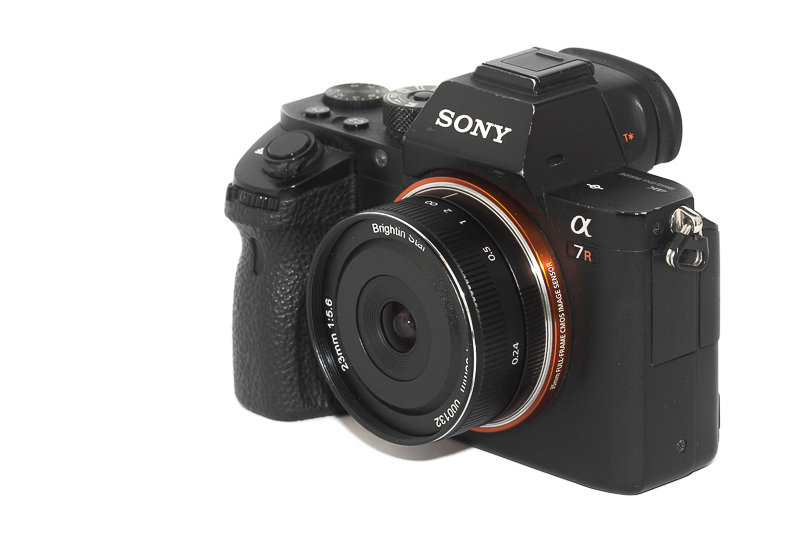
I always think we need more Pancake lenses, but except for the Samyang 24mm 2.8 and the recently reviewed TTArtisan 50mm 2.0 we didn’t get that many options in the Sony FE world yet. The latest addition is this Brightin Star 23mm 5.6. The first odd thing to notice: it is a fixed aperture lens, so it is always f/5.6 and cannot be stopped down further.
Can it still be a viable addition to your kit? Let’s find out…
Sample Images

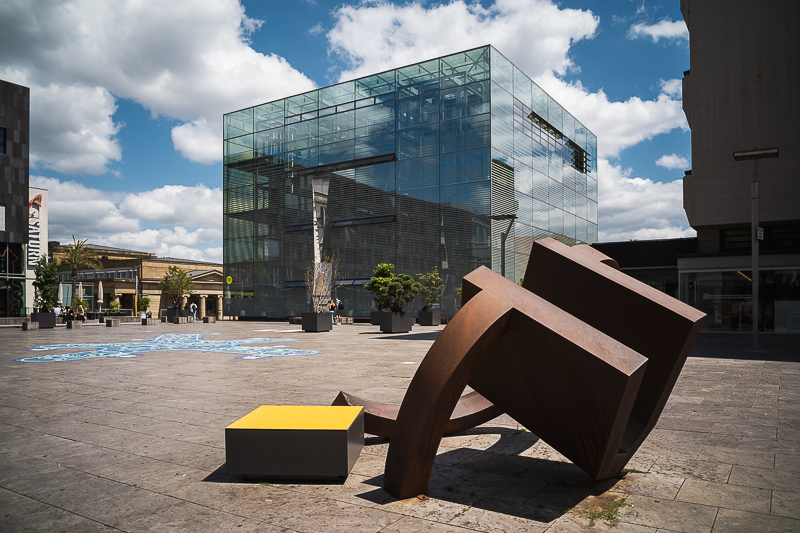
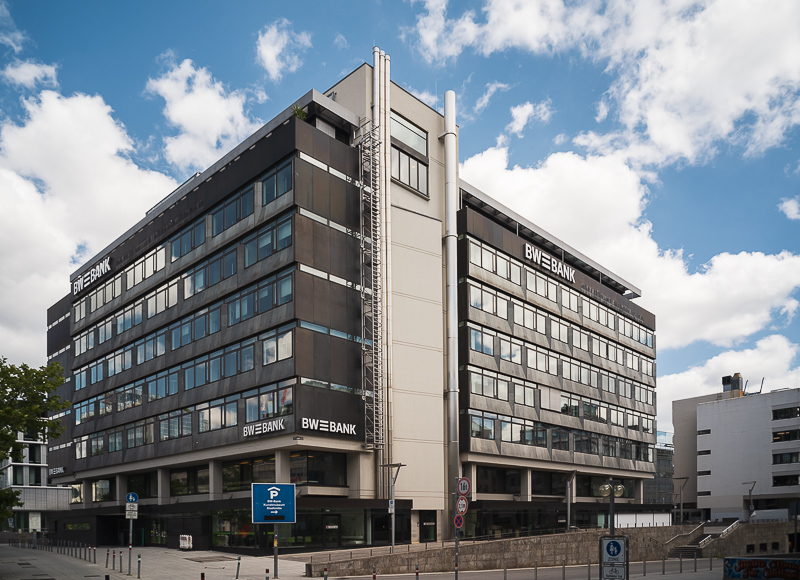
You can find most of the sample images in full resolution here.
Contents
Specifications
The Brightin Star is a one of a kind lens. Its full specifications are:
-
- Diameter: 57 mm
- Field of view: 83.3° (diagonally)
- Length: 24 mm
- Weight: 118g (without caps)
- Filter Diameter: 55 mm
- Number of Aperture Blades: –
- Elements/Groups: 5/4
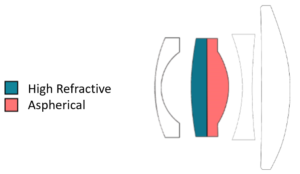
- Close Focusing Distance: 0.25 m (measured: 0.29 m)
- Maximum Magnification: 1:9.2 (measured)
- Mount: Sony E
You can buy this lens from Amazon.com | ebay.com (affiliate links) and the price is $98
Disclosure
The Brightin Star 23mm 5.6 was kindly provided free of charge by Brightin Star for reviewing purpose for a duration of 4 weeks.
Handling/Build quality
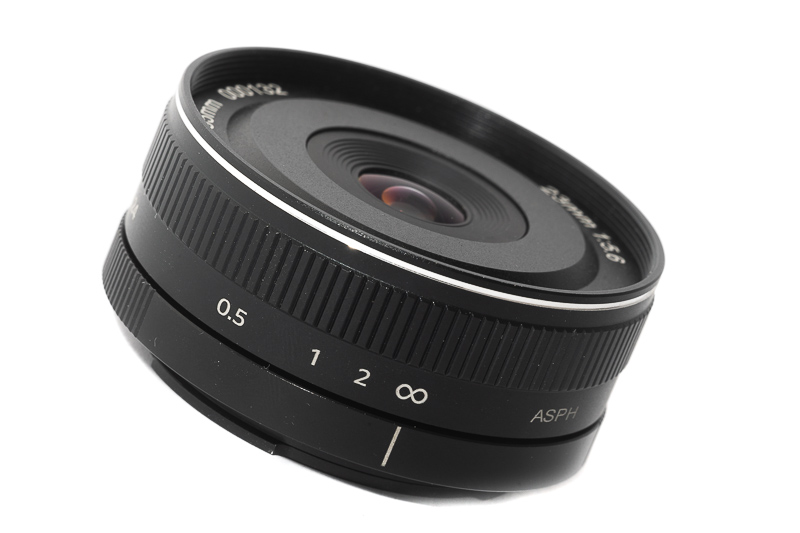
This will probably be the shortest handling chapter yet. The Brightin Star 23mm 5.6 is a unit focus lens and when focusing you just rotate the whole front part of the lens. This means using polarizers is a little less fun as the front element with polarzier will rotate when focusing.
The focus ring has markings for 0.24, 0.5, 1, 2 meter and infinity. The markings all seem to be simply printed, not engraved and filled with paint. The resistance of the focus ring is also a bit on the stiff side, as was already the case for the Brightin Star 50mm 0.95.
When looking at the lens from the rear you see the exposed helicoid with grease. Dust and other debris is easily collected here. You can also see there are no electronic contacts to communicate with the camera. There was also no lens hood included in the package and I am not aware of an official one.
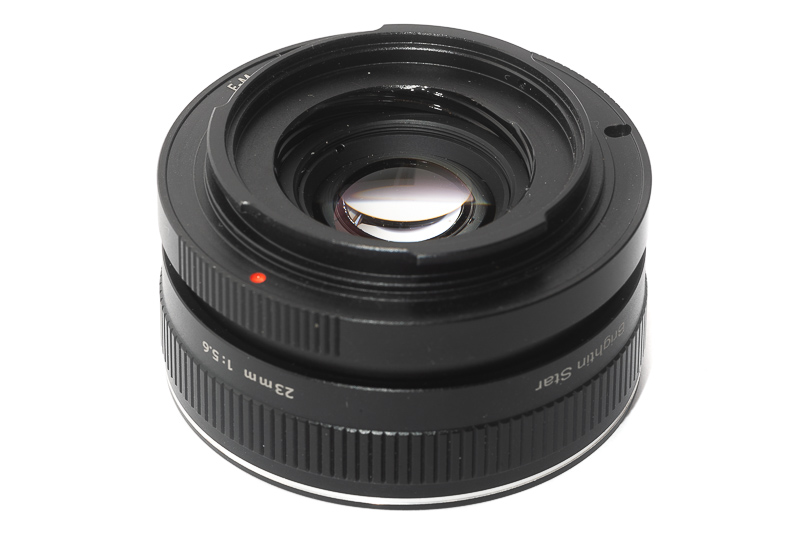
Vignetting
Light falloff

Compact lenses usually show high vignetting figures and this Brightin Star 23mm 5.6 is no exception as I measure 2.6 EV corner shading.
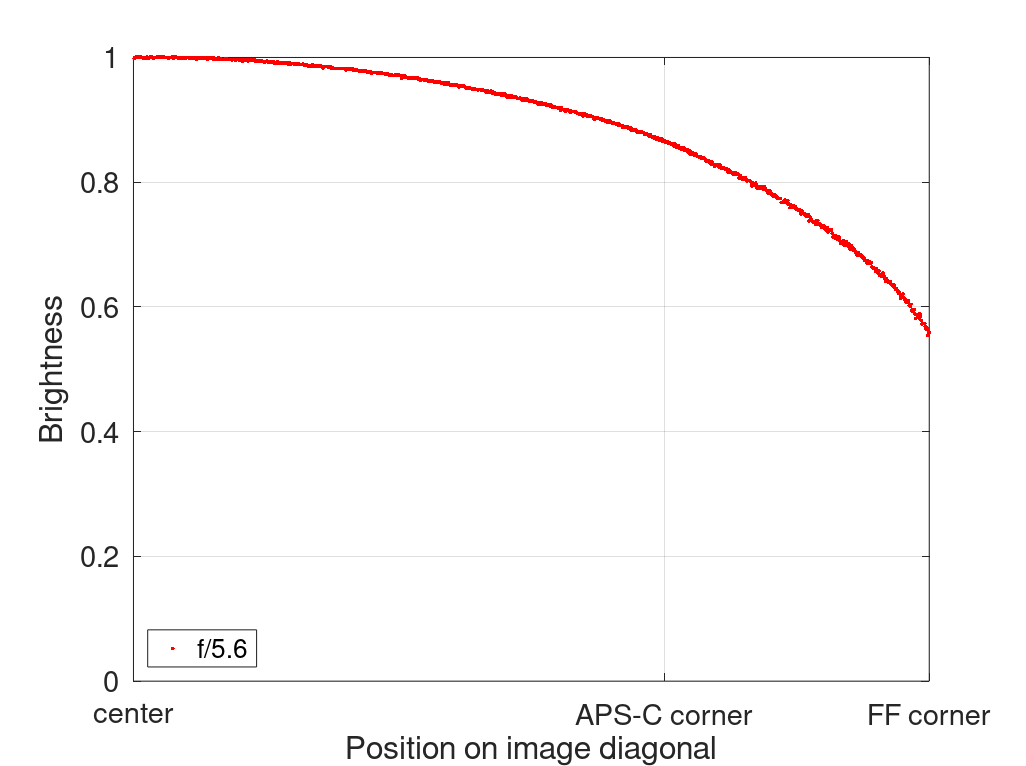
It is recommended to have a look at this article first to get an idea how this brightness graph works.
Color cast

Some wide angle lenses, especially very small ones, show a bit of a color cast towards the corners, the Brightin Star 23mm 5.6 is one of these lenses. With evenly lit or mostly white subjects you can easily spot a green color cast in the corners.

You can check out my article How to: Correcting Color Cast in Lightroom where I explain different methods to fix this.
Sharpness
infinity (42mp Sony A7rII)
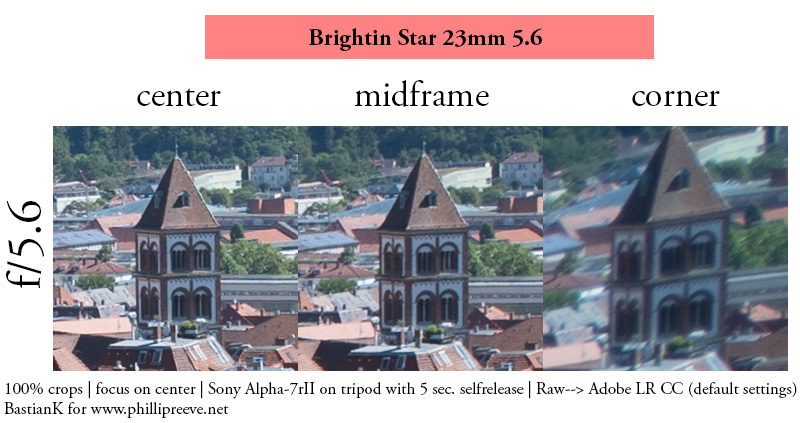
For a slow fixed aperture wide angle lens the one thing that would be important to me is across frame sharpness at infinity. Unfortunately the performance is not that great here. You can also have a look at the full size samples to get a better idea.
Sharpness close (0.3 m 1:9.2)

Surprisingly at close distances the performance is really good, not only in the center of the frame, but it looks to be really flat field with great performance right into the corners. Interesting design decision.
Flare resistance
After good infinity sharpness the second most important thing in a fast fixed aperture wide angle lens would be good flare resistance.
Sun outside frame
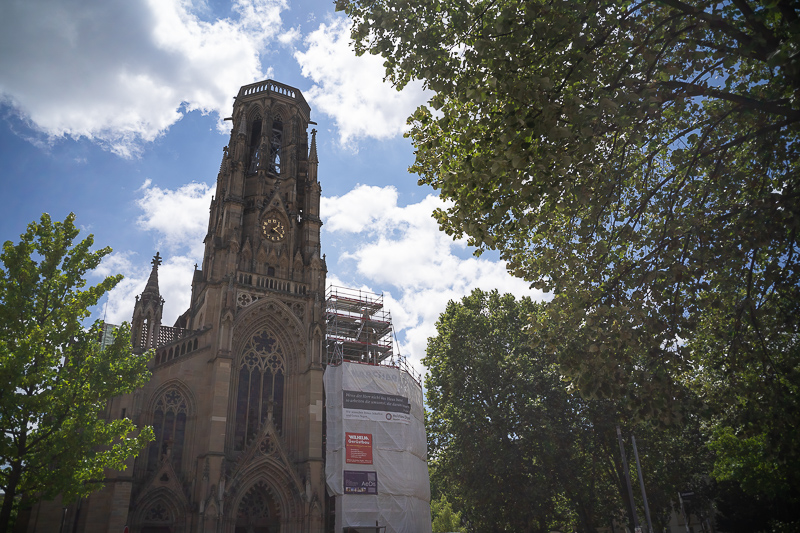
As can be seen from the picture above a light source outside the frame may create severe issues with veiling flare running across most of the frame. Maybe a hood could help here.
With most lenses there is also a very specific position close to the corner of the frame that will lead to a huge flare and the Brightin Star 23mm 5.6 is no exception. Unfortunately there are several positions where something like this can happen here.
Sony A7III | Brightin Star 23mm 5.6
Sun inside frame
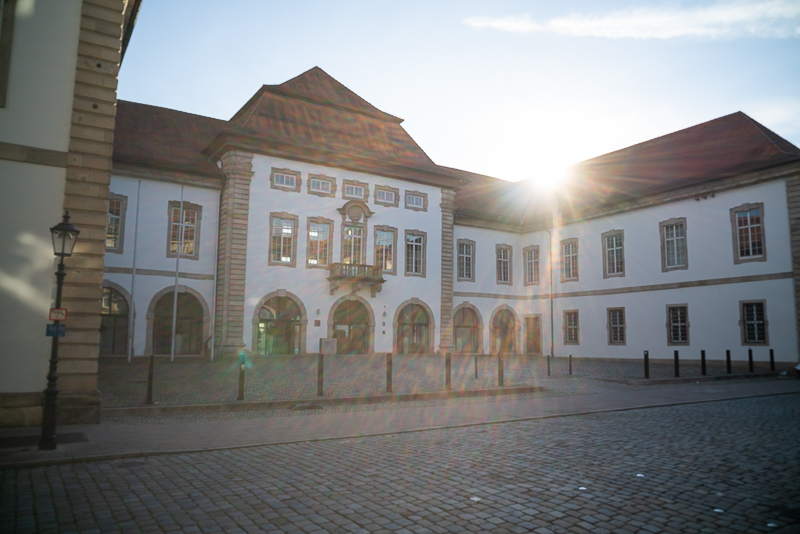
With a strong light source inside the frame we unfortunately also see internal reflections.
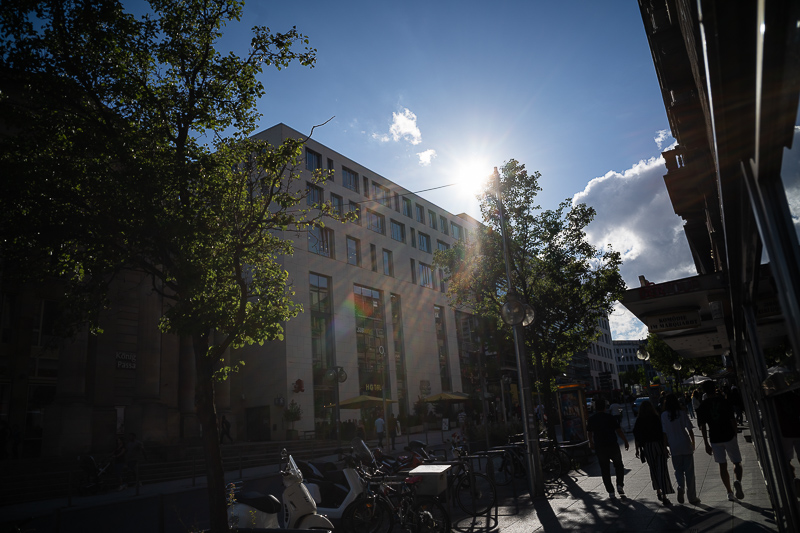
Considering the maximum aperture of f/5.6 I would have hoped for a better performance here. Considering this is a fixed aperture lens it would have been mandatory to be better.
Coma

Coma is a common problem in fast wide angle lenses, but already the small 28mm f/5.6 lenses had issues here and same is true for the Brightin Star 23mm 5.6 as well. Unfortunately we cannot improve the situation by stopping down here.
Distortion
Sony A7III | Brightin Star 23mm 5.6
The Brightin Star 23mm 5.6 shows a noticeable amount of barrel distortion which is also a bit wavy. There is no profile in Lightroom available, but dialing in +5 is doing a reasonably good job of correcting this.
Sunstars
This is a fixed aperture lens with round opening, so no sunstars.
Chromatic aberration
lateral
The amount of lateral CA is low, but the border/corner sharpness is also lacking, so even after correction these areas don’t exactly look good anyway.
longitudinal
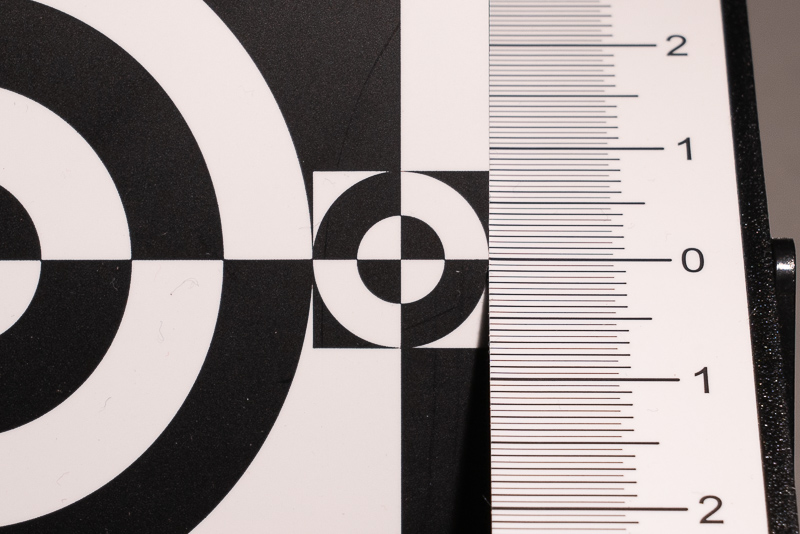
Due to the maximum aperture being f/5.6 you will only very rarely find longitudinal CA in your pictures. Purple fringing is also not really an issue.
Alternatives
Samyang 24mm 2.8 AF:
Phillip reviewed this one and said it is a lens with many compromises, but next to this Brightin Star lens it doesn’t exactly look like that. Without its lens hood the Samyang is only slightly bigger but half the weight and features not only an aperture diaphragm but also a more sophisticated optical design and even AF.
I strongly recommend to pay the premium and get this Samyang lens if you are looking for a compact option in this focal length range and you are on a budget.
buy from Amazon.com | Amazon.de | ebay.com | ebay.de | B&H for $199 (affiliate links)
MS-Optics 24mm 2.0 Aporia:
The MS-Optics 24mm 2.0 is much smaller and light, yet it is a whopping 3 stops faster and even features an aperture diaphragm. It is also an exotic/expensive lens with a few notable quirks and certainly not for everyone.
buy from ebay.com for ~$1200 (affiliate links)
Voigtländer VM 21mm 3.5 Color-Skopar:
The Voigtländer VM 21mm 3.5 Color-Skopar is a small, well balanced modern wide angle lens. Even though it is small in absolute terms it starts to look a bit big compared to the Brightin Star 23mm 5.6 lens reviewed here, but it is noticeably faster, shows better flare resistance and does of course come with an aperture diaphragm.
buy from CameraQuest | B&H | Robert White | amazon.com | ebay.com for $799 (affiliate links)
7Artisans 35mm 5.6 Wen:
The focal length is different but it shares the minimum focus distance of 0.3 m and the fixed aperture. I haven’t reviewed this one.
buy from amazon.com | ebay.com | ebay.de | B&H new for $138 (affiliate links)
Conclusion
good
|
average
|
not good
|
Let me first say, I think there is a market for a tiny and affordable yet slow wide angle lens in the E-mount world – even if it was fixed aperture. I often travel with a fast 35mm as my main lens and a small lens like that, less than 200g, would surely come in handy for the shots where I would like to go wider.
Is the Brightin Star 23mm 5.6 that lens? Unfortunately not. The rather basic mechanical construction, the fixed f/5.6 aperture and the high vignetting I might have been able to accept when dealing with a super small wide angle lens for ~$100.
But what will a slow wide angle lens be used for most of the time? Landscape or architecture pictures. And for that I want decent across frame performance at infinity which the Brightin Star lens doesn’t deliver. Have a look at the sharpness section or my full resolution sample pictures to see for yourself.
What is also interesting: in my testing I found this lens to be free of field curvature and showing great across frame performance at the minimum focus distance. It simply does not make sense to me.
You can buy this lens from Amazon.com | ebay.com (affiliate links) and the price is $98
Sample Images
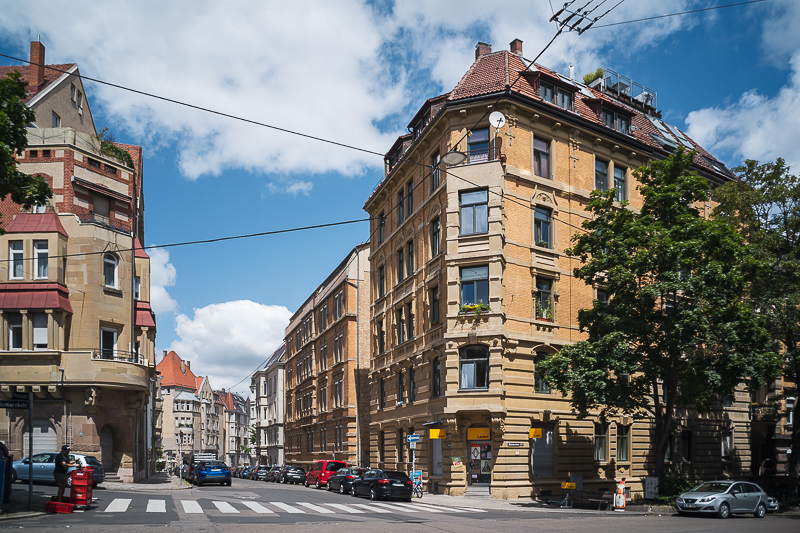
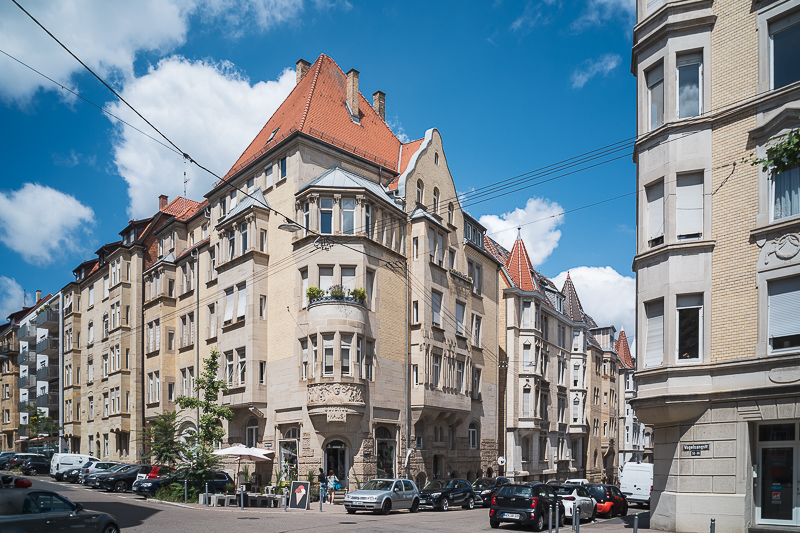
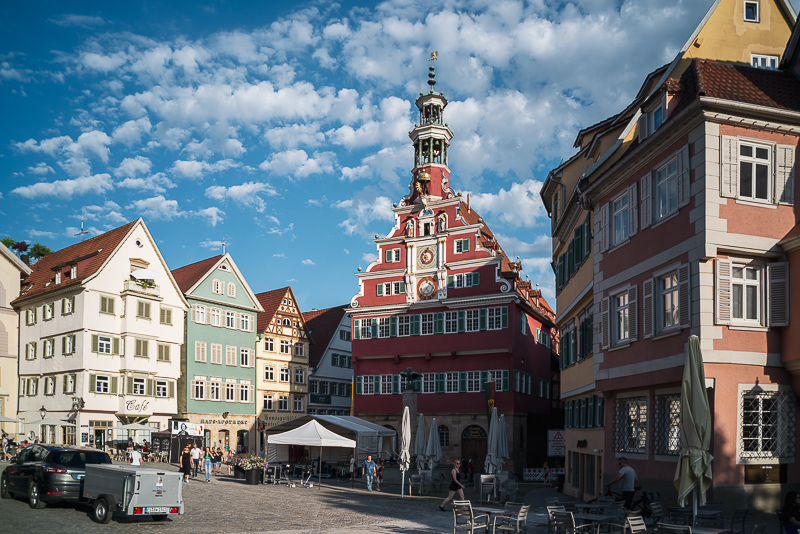
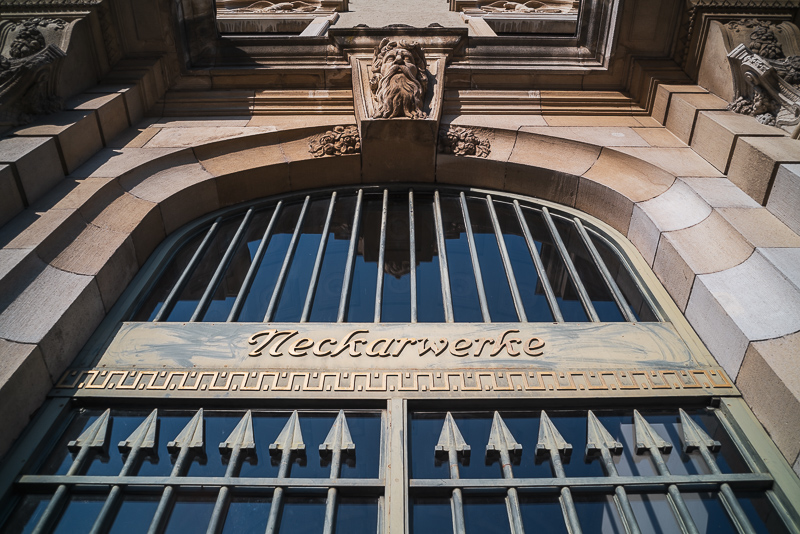
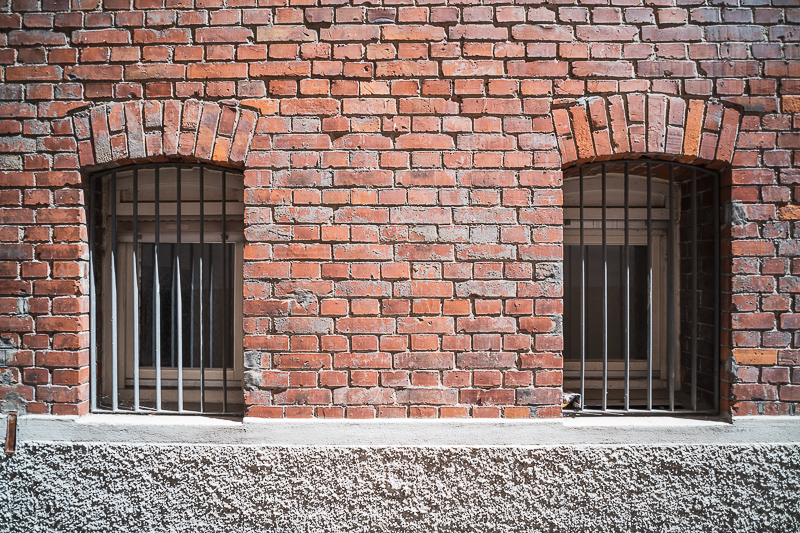
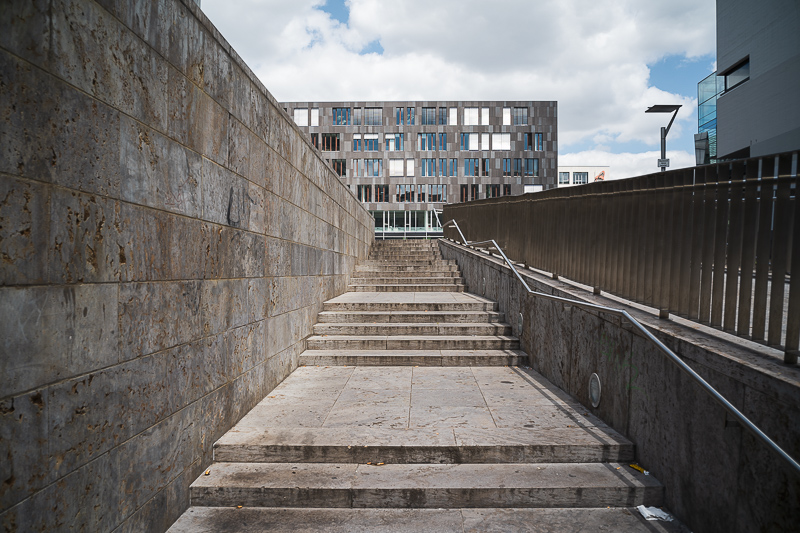
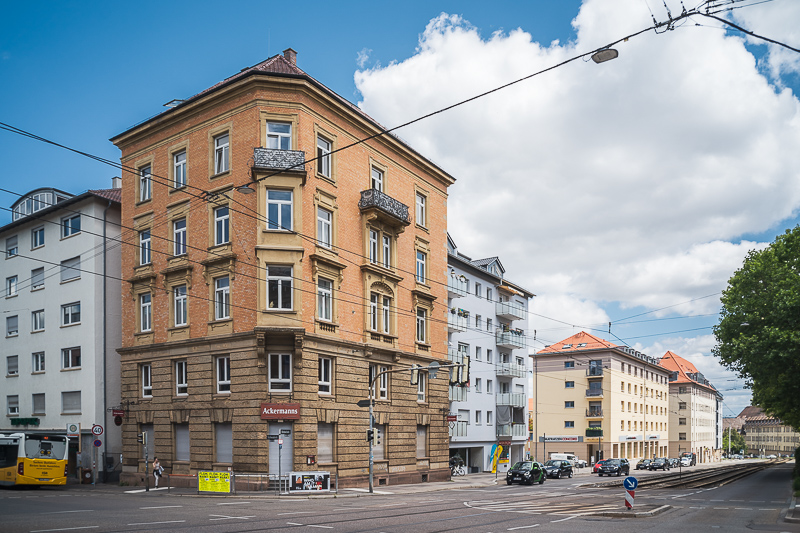
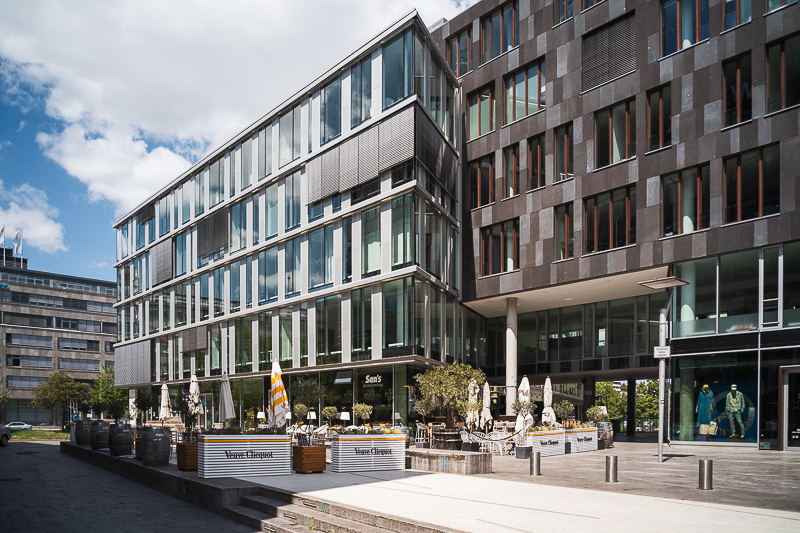
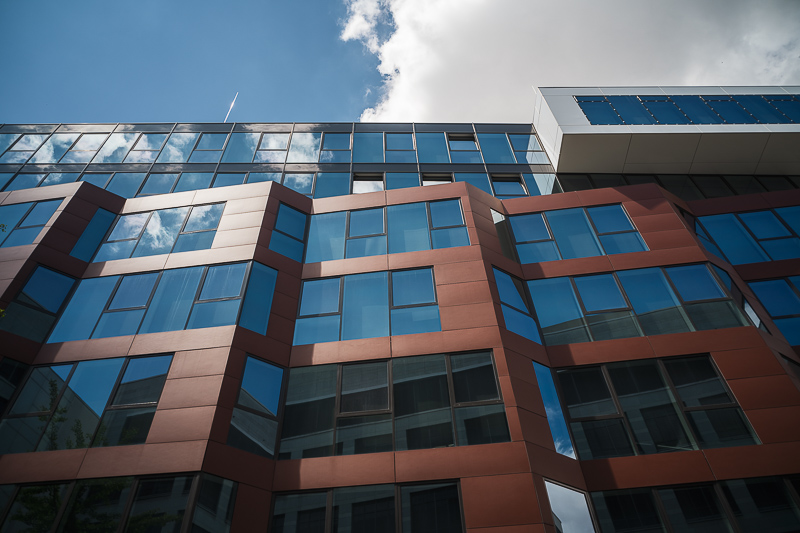
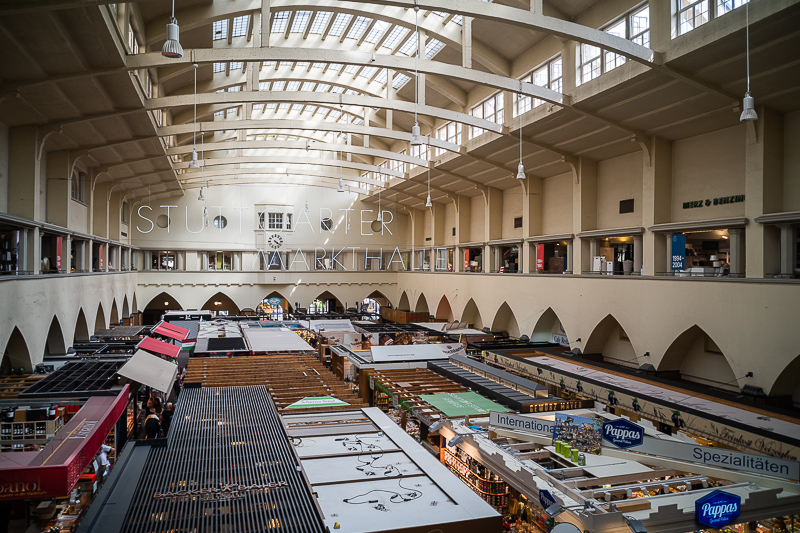
You can find most of the sample images in full resolution here.
Further Reading
- Sony FE lenses: Our comprehensive and independent guide
- Review: MS-Optics 24mm 2.0 Aporia
- Review: Zeiss Loxia 21mm 2.8
- Lens aberrations explained
Support Us
Did you find this article useful or just liked reading it? Treat us to a coffee!
![]()
![]()
![]() via Paypal
via Paypal
This site contains affiliate links. If you make a purchase using any of the links marked as affiliate links, I may receive a small commission at no additional cost to you. This helps support the creation of future content.
Latest posts by BastianK (see all)
- Review: Canon EF 50mm 1.0 L USM – Still the world’s fastest AF lens - December 30, 2025
- Review: Nikon Nikkor 105mm 1.8 Ai-s - December 28, 2025
- 2025 – Year in Review - December 23, 2025

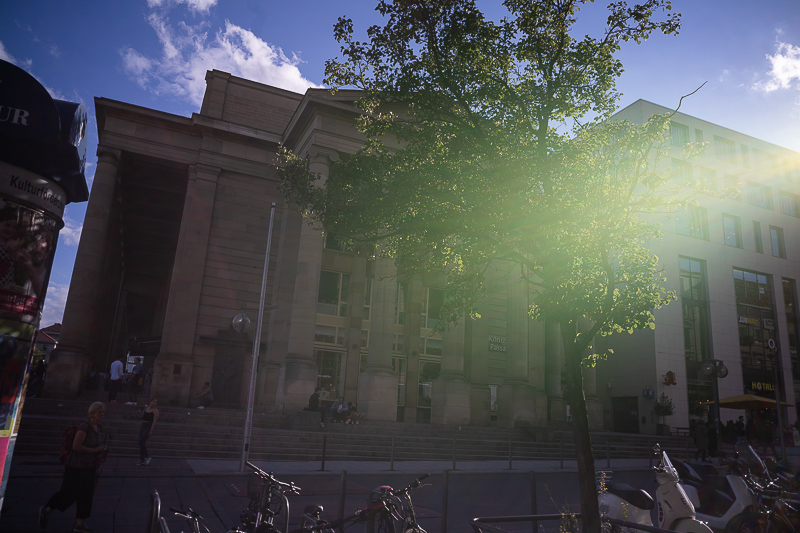
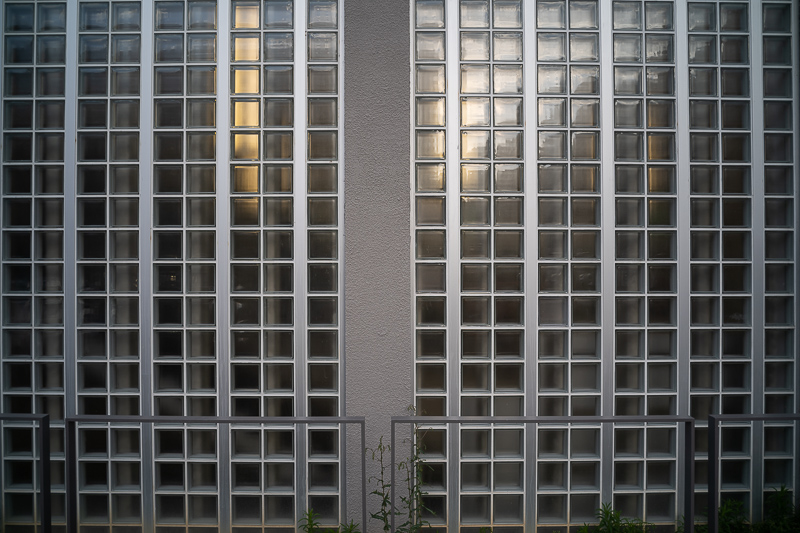

Hello Bastian,
considering the obvious flaws of this lens I‘m once again stunned by your abilities as a photographer. You regularly manage to get completely acceptable — or even good — pictures out of crappy lenses (still the best example for your skills are the sample shots of the awful Zenitar 50/0.95, I guess).
The lens itself unfortunately is rather uninteresting as a low price point can‘t make up for everything. Better infinity performance and everything would be fine. But this way I can only imagine snapshots to be banned on small prints (e. g. on instant camera film where this look would fit the situation) as a use case. And in that case: the more portable/faster/cheaper solution would be to directly use an instant camera instead of the combination of a $150 printer, a $100 lens, and a $2k+ camera.
So in the end: no real use case. Too bad.
But as always: a very nice, but this time — due to the lens — rather short review.
Thank you very much for your work!
Greetings
Olaf
Contrast and colors are not bad actually, so it is a real pity that not only the corners but also the borders lack in terms of resolution.
Also we should keep in mind for 30% less TTArtisan managed to produce a similarly small 50mm f/2.0 lens with a very sophisticated mechanical construction,
so it is also hard for me to overlook the absence of an aperture diaphragm (which might have lead to better resolution as well as flare resistance) as well as the open helicoid.
Regarding the sample images: yes, in small resolution they don’t look that bad, therefore I felt the need to give a warning (did that twice actually) to have a look at the full resolution ones to know what you are getting into 🙂
I actually really love the contrast of this lens, and maybe I could end up with it someday as more of a novel lens to keep me entertained lol, but the poor corners don’t have me impressed and def not a must-by for me even if it’s dirt cheap and small
The contrast and colours are decent, but for $100 stopped down to 5.6 I wonder about vintage/older 24mm options. Although even those struggle.
I would say maybe they could exchange that poor corner sharpness for field curvature instead, but then again it’s obvious a lens like this would be used for landscapes…
Great review anyway!
It leaves some unanswered questions, doesn’t it…
Perhaps it could satisfly some aps-c owners, those who prefer 35mm FL eqiuvalent and shoot street photography or something. But they usually prefer to be able to stop the lens down further than 5.6 and go point-and-shoot. Well, I think most of us need aperture control, it’s one of the last functions I could live without. F5.6 seems to me like the ultimate unlucky compromise here, slow for handheld low light shooting (not to mention subject isolation, but on WA some don’t need that), too fast for many landscape or urban environment compositions where we want more DOF. On the other hand, it’s “too good” to serve as a toy lens. I’d rather have F11 version of this lens, if it would render sharp edges and corners than this, as it would at least make sense for some work, maybe as a backup lens for photo hikes. I’d still rather buy centered copy of that Samyang though… I don’t this company studies the market in serious manner, but rather invests everything into new product lines, going for hit or miss strategy (I guess in their economy this model can be sustainable…).
I feel the same. If it was really good and only f/8.0 or f/11 I would have had more use for it.
Anyone else have suggestions for Sony full frame pancakes? I do love to the 40mm lens on my Pentax K-1 and wish Sony had an equivalent.
I don’t think there’s a lot of actual pancakes (closer to 1″ long) for FF E mount… If you can live with something less pancake-y (more cupcake-y?) around 1.4 – 1.75″ long then that opens up a lot of options, from the CV 21/3.5 & TTartisan 50/2 already mentioned above, to the ZA & Samyang 35/2.8 w/AF, and even the new Sony G trio (24/2.8 & 40/50 f2.5). I’d love to see more actual pancakes but it looks like a big design challenge w/o the extra DSLR flange distance…
Great review as usual. My theory is that Brightin Star originally planned it as an APS-C lens, and when they saw it actually covers the FF image circle, they slapped the FF designation on it. The performance is pretty similar to my originally crop 7artisans lens when I put it on my a7r.
I do think it is possible that it had been repurposed, but I guess maybe some industrial application.
I wonder if corner sharpness, edge color cast and vignetting would be mitigated by using this lens in crop mode?
Sure, I am just not sure crop users are looking for a 35mm f/8 equivalent lens.
True… but that is the focal length and f stop I use when I shoot street. Might be a useful backup with a 28mm. Very helpful review. Thanks.
I’ve been using this lens for the past six months on a Sony A7Riii and A7C – it’s a very good lens, ideally suited for what it was created for, which is street photography using hyperfocal, where pin point sharpness on infinity (or pin point sharpness in general) is unimportant and distortion or vignetting are irrelevant, or sometimes actually desired.
I used the Samyang 24 2.8 before, but it is a focus by wire only lens which makes it a nightmare to use in hyperfocal.
I also use the Funleader 18mm, which works well but can be too wide at times.
Obviously nobody in they’re right mind would use this lens for serious architectural or landscape photography but as long as one keeps in mind what it was made for it’s one of the very few wide angles for E mount which is a true pancake design and does not attract attention like the massive 1.2 lenses that seem to be par for the course today do.
I am glad there is one person who finds this to be a “very good” lens! Brightin Star did not make it for completely nothing then.
Quite the contrary – that’s the beauty of art! In the hands of a Daido Moryiama a compact camera can be a “very good” camera, while in the hands of an unimaginative pedant a Leica is just an instrument for yet more exam passing, Instagram friendly photography.
Can we see your pictures created with this lens somewhere?
https://www.artbasegallery.de
instagram.com/mechanical.eyelid
So what about the 35mm f2.7 Experimentaloptics?
What about it?